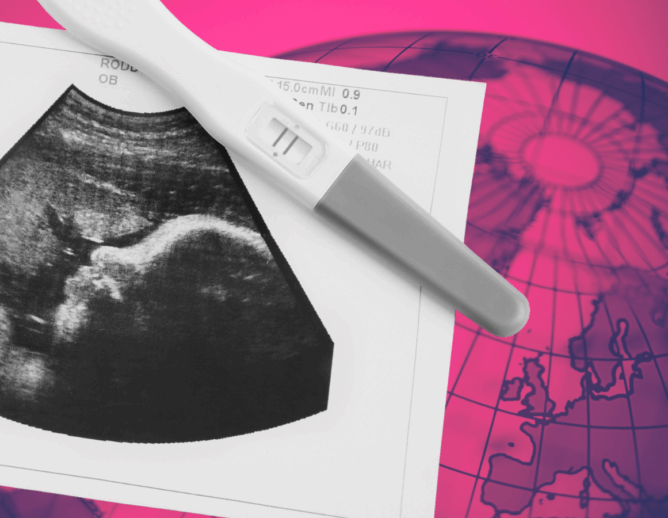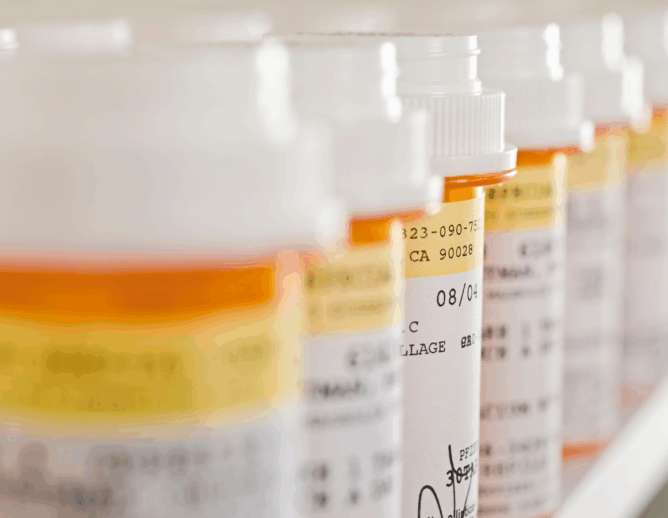Introduction
Long gone are the days of a single substance driving the overdose crisis. The United States is now contending with a volatile and unpredictable drug supply that poses increasing challenges for naloxone intervention. While fentanyl remains a primary component of overdose fatalities, it has become just one ingredient in an unregulated supply that now includes tranquilizers, synthetic benzodiazepines, nitazenes, and other novel psychoactive substances. Despite these new hybridized intoxicants, the overdose response infrastructure continues to rely on retrospective data systems and toxicology tools built for a previous era of the epidemic.
The pace and complexity of chemical adulteration demand a fundamentally new strategy that prioritizes real-time drug checking, proactive surveillance, and streamlined data sharing across harm reduction programs, public health agencies, and emergency response systems.
This Expert Column argues for immediate investment in advanced drug checking infrastructure, operational funding for trained harm reduction providers, and modernization of federal and state surveillance systems. As the illicit supply outpaces enforcement and treatment, our capacity to monitor and respond must be brought up to speed.
A Drug Supply Transformed
In recent years, the drug supply has been contaminated with a growing number of substances that increase overdose risk and undermine traditional treatment protocols. These include:
- Xylazine: A veterinary tranquilizer that causes deep sedation and necrotic tissue damage. Xylazine does not respond to naloxone and has been found in over 80% of fentanyl-positive samples in Maryland.
- Medetomidine: A tranquilizer 200 times more potent than xylazine, detected in 87% of fentanyl samples in Philadelphia as of late 2024. It is associated with prolonged unconsciousness and bradycardia.
- N-methylclonazepam: A designer benzodiazepine responsible for a mass overdose event in Baltimore in July, where 27 individuals overdosed in a single day. Since this is not an opioid, naloxone was ineffective, and overdoses required intensive care.
- Nitazenes: A class of synthetic opioids up to ten times stronger than fentanyl, now appearing in thousands of U.S. drug seizures and linked to clusters of fatal overdoses.
- Eutylone: A synthetic cathinone often sold as MDMA or in counterfeit pressed pills. Eutylone has been linked to an increasing number of overdose deaths and is associated with extreme anxiety, hallucinations, paranoia, and cardiovascular distress. In some regions, it is referred to by the street name “boot,” though usage may vary. Overdoses can involve prolonged psychosis, seizures, and death.
The emergence of these compounds reflects an increasingly synthetic and polysubstance environment. Users are often unaware of what they are consuming, overdose reversal may not be possible with naloxone alone, and single-drug test strips are becoming obsolete.
The Iron Law of Prohibition in Action
The evolution of the drug supply is a predictable result of policy decisions. The recent passage of the HALT Fentanyl Act, which permanently classifies fentanyl analogues as Schedule I substances, reflects an enforcement-first approach that has historically produced more dangerous outcomes. Known as the “iron law of prohibition,” this principle holds that intensified interdiction tends to yield more potent, concealable, and toxic substances. As regulators crack down on known compounds, illicit producers rapidly adapt chemical structures, leading to a marketplace defined by potency, unpredictability, and risk.
While some may point to the rising potency of legal cannabis as a counterexample, there is a key difference. In a legal market, potency trends are shaped by consumer demand, tempered by regulatory oversight, and accompanied by transparency about product contents. Essentially, consumers can make informed decisions based on labeled dosages, standardized testing, and quality control protocols. In the illicit market, however, potency is driven by supply-side incentives. Traffickers favor compact and potent substances to evade detection, maximize profits, and reduce transport risk. The result is a volatile and increasingly toxic drug supply, where neither users nor health systems have adequate information to respond in real time.
Surveillance After the Fact
In July, Baltimore, Maryland, experienced a mass overdose event involving the designer benzodiazepine N-methylclonazepam. Thanks to rapid local response and harm reduction expertise, no lives were lost. Baltimore’s existing investment in drug checking infrastructure, including its innovative Check It program, exemplifies what is possible when proactive tools are in place. Check It, a mobile drug checking intervention operating in high-overdose neighborhoods, provides point-of-care analysis of drug samples and shares real-time findings with public health partners. Programs like Check It are integral to identifying novel adulterants, informing service delivery, and preventing overdose deaths. Baltimore’s response models the kind of proactive surveillance and coordinated care that can be replicated across the country with the right tools and support.
Despite trending polysubstance overdose events, most U.S. jurisdictions lack the tools to detect and respond to new polysubstances as they emerge. Instead, our most trusted and efficient surveillance systems — such as the Centers for Disease Control and Prevention’s (CDC) State Unintentional Drug Overdose Reporting System (SUDORS) and the Drug Enforcement Administration’s (DEA) National Forensic Laboratory Information System (NFLIS) — rely on postmortem toxicology or delayed drug seizure data. While useful for historical analysis, they add little value during active overdose outbreaks.
Further weakening federal infrastructure for tracking drug-related morbidity, the 2025 discontinuation of the Drug Abuse Warning Network (DAWN) — once the primary system for emergency department overdose surveillance — further weakened federal infrastructure for tracking drug-related morbidity. Without real-time surveillance, many states lack the tools to issue timely alerts, tailor clinical protocols, or identify emerging risk patterns at scale.
The Role of Drug Checking Technology
Fourier-Transform Infrared (FTIR) spectroscopy offers a promising solution. Already in use in countries such as Canada, New Zealand, and the United Kingdom, FTIR allows for on-site, non-destructive testing of street drugs to identify both known and novel compounds. When combined with immunoassay strips (e.g., for fentanyl or xylazine), it offers an effective screening tool that is:
- Actionable (alerts public health officials to new contaminants)
- Rapid (results in minutes)
- Non-destructive (preserves the sample)
- Empowering (allows users to make informed choices)
Several states are piloting FTIR programs. New York, for example, has deployed FTIR devices across eight harm reduction sites as part of a coordinated drug checking initiative. Washington State is developing a community drug checking network using FTIR-equipped providers. A pilot program in Rhode Island demonstrated the feasibility of integrating FTIR drug checking into community-based harm reduction services. The program also confirmed that frontline staff can be effectively trained to operate the equipment and communicate results to people who use drugs, contributing to more informed decision-making and a timely public health response.
Broader studies on the influence of drug checking machines showed that, when individuals receive unexpected results, they are significantly more likely to dispose of the substance, reduce the dosage, or adopt a safer method of consumption.
Unfortunately, harm reduction organizations are often trained and willing to provide the service but face legal ambiguity, interagency bottlenecks, or a lack of funding.
Cost-Benefit Analysis: Investing in Drug Checking Programs
The economic cost of failing to respond to the evolving illicit drug supply far outweighs the investment in drug checking and real-time surveillance systems.
Across the United States, overdose-related emergency department visits, intensive care stays, and post-overdose care increasingly contribute to a growing financial burden on public health systems. The average cost of an outpatient opioid-related emergency department visit is $533. More complex inpatient stays average $4,353. With the rise of synthetic adulterants and novel psychoactive substances, the clinical complexity and associated cost of treatment have correspondingly increased. For instance, soft tissue wounds linked to xylazine can require ongoing care ranging from $160 to over $1,000 per episode. Severe cases may result in amputations that cost thousands per procedure.
This can be extrapolated to the epidemic more broadly, as well. In 2023, the United States recorded over 100,000 overdose deaths, many involving polysubstance combinations that are undetectable through standard personal drug checking strips. While each fatality represents not only a profound human loss, it is also a substantial economic one. In a recent analysis, the White House Council of Economic Advisers estimated that the annual cost of the opioid epidemic exceeds $2.7 trillion, which includes direct health care costs, lost productivity, criminal justice expenditures, and the value of statistical life lost.
In contrast, drug checking programs represent a low-cost, high-impact intervention. While initial investments vary, FTIR devices generally cost $25,000. Recurring costs depend on the scale of use and whether confirmatory testing is included. Pilot programs in Maryland, New York, and Rhode Island have shown that these tools can be effectively operated by trained harm reduction staff, generate actionable real-time data, and empower individuals to make safer decisions about substance use. When overdose-related hospitalizations average thousands of dollars per case and the national opioid crisis carries a $2.7 trillion annual price tag, the benefits of investing in technology and data infrastructure far outweigh the cost.
Federal Guidance and Funding Pathways
In July, the Substance Abuse and Mental Health Services Administration (SAMHSA) issued a Dear Colleague Letter reaffirming that drug checking tools are an allowable use of federal discretionary grants. This guidance provides states the opportunity to allocate federal grants and opioid settlement funds toward drug checking infrastructure, workforce training, and surveillance expansion.
Moreover, the Trump administration has continued to frame the overdose crisis as a public health emergency. A public health emergency in this context authorizes the Department of Health and Human Services to make grants, enter contracts, and provide supplies and equipment, which could include drug checking technologies. It also unlocks the Public Health Emergency Fund for activities, such as strengthening biosurveillance and laboratory capacity, which are functions that drug checking equipment directly serves.
Barriers to Implementation
Despite growing support for drug checking as a vital public health tool, structural challenges still limit its reach and effectiveness. In many states, carrying even small quantities of a substance for testing can lead to arrest or prosecution. This legal ambiguity creates fear among service providers and discourages public participation, especially among communities that are already disproportionately targeted by law enforcement, such as BIPOC and low-income individuals. The result is a fractured system in which life-saving services are underutilized and public trust is eroded.
In the absence of full decriminalization, drug checking must serve as a harm reduction strategy that helps mitigate the consequences of prohibition and build momentum toward more humane, evidence-based approaches.
Effective drug checking must also be community-centered. Organizations that have built long-standing relationships with people who use drugs are best equipped to offer these services in ways that are safe, culturally competent, and non-punitive. These providers can deliver more than just results; they offer education, harm reduction supplies, and referrals to supportive services. However, many of these groups remain underfunded and lack the clinical training necessary to deliver comprehensive care.
To fully realize the benefits of drug checking, governments must invest not only in the technology but also in the infrastructure that supports its ethical and effective implementation. These efforts must include reforming policy, such as California Assembly Bill 2136, which clarified in September 2024 that drug checking equipment and services are not classified as drug paraphernalia. The bill also granted legal protections for both service providers and participants, effectively removing the threat of arrest or liability for testing activities. This model demonstrates how legal clarity can unlock safer and more effective drug checking efforts across the country.
Policy Recommendations
To strengthen national overdose prevention efforts, policymakers should:
Expand federal and state funding for FTIR and multi-substance drug checking equipment, including technical support and data systems.
The federal government, through SAMHSA and the CDC, should allocate grant funding for equipment, training, and implementation. State governments can supplement these investments with opioid settlement funds and local public health budgets.
Clarify legal protections for drug checking providers through administrative rulemaking or legislative exemptions that shield staff from controlled substance possession charges.
State legislatures and health agencies should follow the example of California Assembly Bill 2136, which exempted drug checking equipment and services from paraphernalia laws and provided legal protections to service providers and participants.
Establish real-time drug surveillance systems that integrate data from emergency departments, harm reduction sites, and forensic labs.
Federal and state public health agencies should collaborate on building cross-sector data systems that use aggregate and de-identified data to protect individual privacy. Local health departments can serve as regional hubs that translate real-time data into community alerts and clinical advisories.
Develop national standards and training protocols for the use, interpretation, and communication of drug checking results in both community and clinical settings.
The federal government, led by CDC and SAMHSA, should coordinate a national framework for training and quality assurance. States should incorporate these standards into licensing or funding requirements for drug checking programs.
Restore emergency department surveillance through a modernized replacement of the DAWN system, enabling near real-time tracking of non-fatal exposures and emerging compounds.
Congress should direct SAMHSA to re-establish a robust national surveillance system that integrates data from hospitals, EMS, and drug checking programs.
Create research and development incentives, such as education grants, tax credits, or public-private partnerships, to support innovation in personal-use drug checking technology.
The federal government should leverage the National Institutes of Health, the Biomedical Advanced Research and Development Authority, and the Food and Drug Administration innovation pathways to promote affordable, scalable drug checking tools. States can pilot the integration of personal-use devices through procurement programs or public health pilots.
Conclusion
The United States is fighting a polysubstance overdose crisis with mono-substance tools. Traditional surveillance and enforcement strategies cannot keep pace with the chemical innovation occurring in illicit markets. Without rapid detection and coordinated communication, overdose response efforts will remain reactive, fragmented, and insufficient.
Drug checking technology is a crucial component of a modern public health infrastructure. It equips providers and communities with the knowledge to prevent overdoses, adapt clinical protocols, and shape policy that reflects the reality on the ground. As the drug supply continues to evolve, investing in real-time surveillance is essential if we are to protect the most vulnerable and build a public health system capable of meeting the moment.
About the Author:
Amber Lashbaugh is a Master of Science in Addiction Policy and Practice candidate at Georgetown University and the director of technology at the Maryland Secretary of State. She serves on the steering committee of Decrim Poverty DC and is president of Hoyas for Recovery.
DISCLAIMER: The views and opinions expressed in this piece are those of the author and do not reflect the views of the O’Neill Institute.



